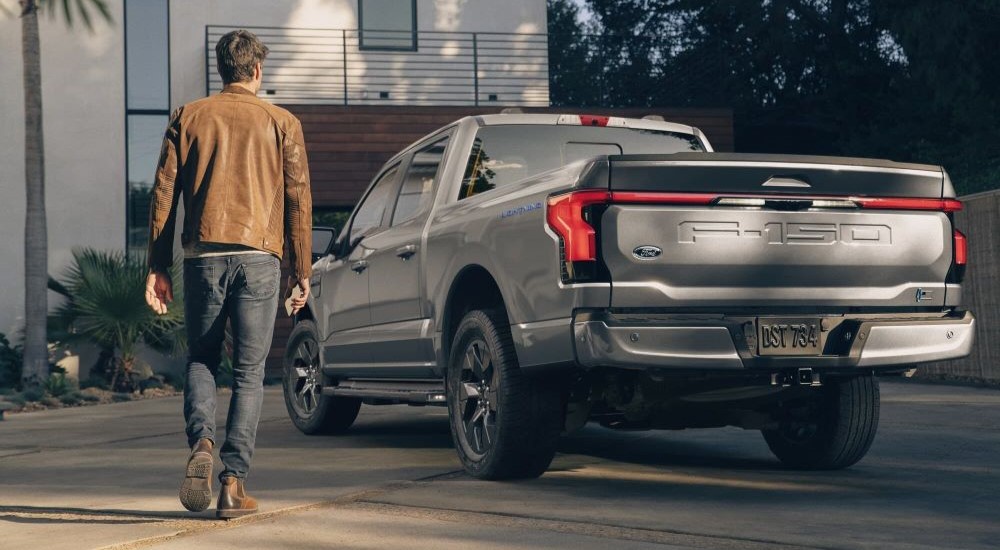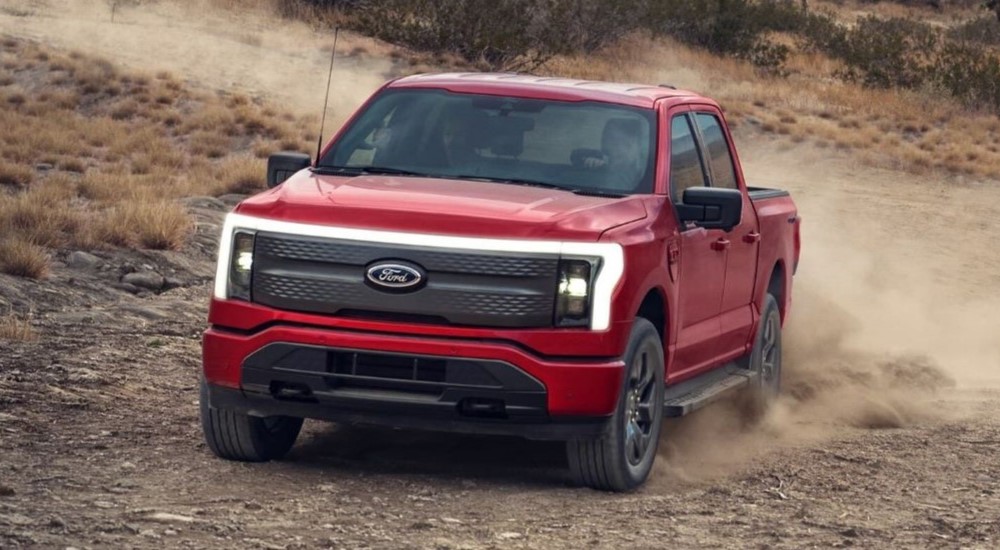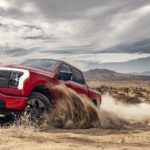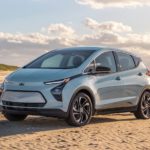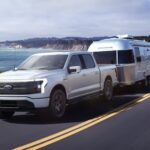Most revolutions fail. For every American Revolution or Russian Revolution, there are many more that peter out. One such failed revolution wasn’t a political one, but an electric one: the electric vehicle revolution at the turn of the millennium. If you were reading the automobile news in the early 2000s, you know electric vehicles started getting some press. By no means was this the first time EVs were in the news, but it was the first time that talk of EVs becoming dominant on the market began to take hold. Manufacturing companies that aimed to produce EVs and only EVs cropped up.
But that revolution failed. A variety of factors played a part in its failure, but by 2010, talk of EVs had quieted. They made up less than 1% of automotive purchases. The optimism of the early aughts became a distant memory. Today, though, that optimism has returned. We seem to be on the brink of another EV revolution, and this one might just stick. Take a look at the 2023 Ford F-150 Lightning. It’s hard to believe that a traditional pickup truck can now be fully electric. Certainly, no past EV movement accomplished such a feat. That’s one reason to believe that all this electric talk may finally lead to a true revolution.
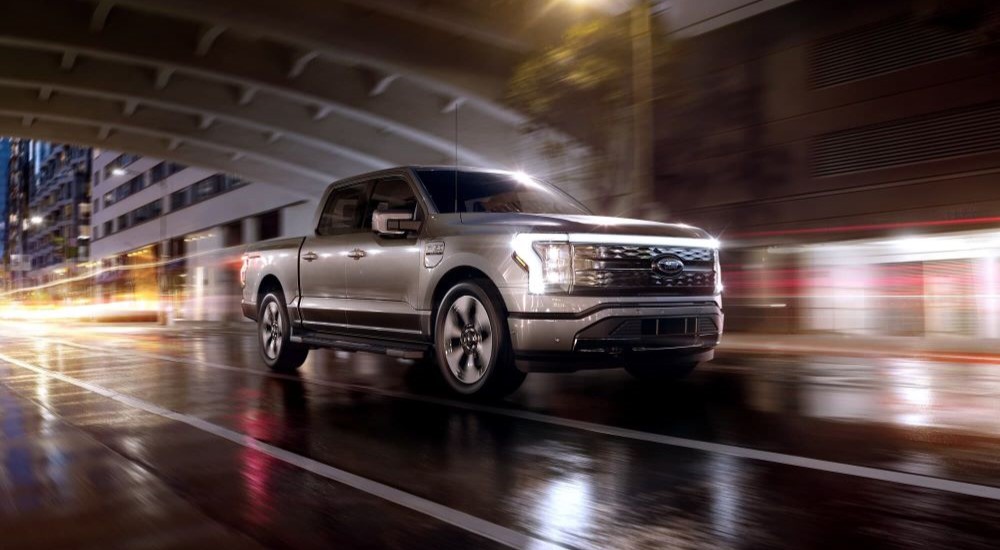
Why Did Past Electric Revolutions Fail?
Like so many movements of the past, it’s difficult to point to one specific cause that led the electric vehicles of the early 2000s to flounder. A major factor came from range limitations. EVs of this era could only travel short distances before requiring a charge. This meant that drivers couldn’t rely on their EVs for long trips, as they’d need to recharge constantly, and charging stations were not always available.
Another factor was that the EVs that were on the market in the aughts were almost all sedans or hatchbacks. That prevented drivers who wanted or needed SUVs or trucks from investing in an EV. This created a clear ceiling for both sales and interest.
Additionally, these EVs had futuristic (for the time) funky styling. The industry seemed to think if a car was electric, it had to look like a shuttlecraft from the Starship Enterprise. This attempt to draw in customers backfired horribly, driving away potential EV customers who simply didn’t want to drive a car they thought was ugly.
As a result, major manufacturers that tried to create EVs found limited success, quickly discontinuing many of them. Thanks to this, consumers got it in their minds that EVs overall were a failure, leading to a cycle of destruction for the EV. Interest flagged, sales flagged, and discussion of EVs quieted. It did not look like there’d be a comeback anytime soon. Fast-forward ten years, and that prediction couldn’t be more wrong.
What Restarted the EV Revolution
Even before Elon Musk became involved, Tesla engineers worked on the Roadster, an electric car that could travel much farther than past options, 200 miles on a full charge. Problems remained, such as a lack of charging stations across the nation, but as a proof of concept, the development of the Roadster reignited major manufacturers’ interest in putting out EVs. When the Roadster hit the market in the late aughts, it coincided with the largest recession in living memory. Despite this, the Roadster saw some success, and other manufacturers reconsidered their withdrawal from the EV market. Were they leaving money on the table by sticking with gas?
Initially, the answer still seemed like a no. Electric SUVs and trucks still sounded like a distant dream to most, and the market at large showed little interest in converting to electric. Yes, consumers were more environmentally aware than in the 1990s, but they still harbored severe doubts about EVs. Some of these doubts were not based in reality, especially after EVs gained the ability to travel much further, but once an idea becomes set in the market’s mind it can be hard to remove it.
Manufacturers suspected that the mindset would eventually change, however, and did not want to be left behind when the tides shifted. They started to invest more in electric and hybrid vehicles, but they probably did not expect the tide to change as quickly as it did.
Is the Real Revolution Here?
At the risk of being proven wrong in a few years, I’ll say it seems like the current EV revival is the one that’ll stick. What’s different? One is government investment. Big investments in 2009, 2021, and 2023 have resulted in EVs getting a helping hand from Uncle Sam. The money doesn’t just go to manufacturers, either. It is also aimed at setting up charging stations across the country and creating tax breaks for people who buy EVs. (There are plenty of conditions, however, so don’t automatically assume you’ll get a tax break. You will definitely want to do your research before making any economic assumptions.) These investments will quell a lot of the concerns consumers had in the past about EVs.
Another part of the change comes from consumers themselves. They are more concerned about environmental issues than they were in prior decades. This goes doubly so for younger people, a group that embraces technology and is far more likely to be interested in EVs. Since that market will only grow, manufacturers are aiming to put out EVs in order to entice them while they’re young and have them for life thanks to brand loyalty. While outlooks vary, researchers, including the US government, believe that by 2030 about 40% to 50% of vehicles sold will be electric.
Meeting a New Market
In the aughts, EVs were sedans and hatchbacks, often less than attractive ones. That’s no longer the case. The aforementioned 2023 Ford F-150 Lightning is a perfect example of why consumers are more likely to embrace EV tech this time around. In fact, this model has been selling beyond expectations, with Ford having to rush to meet demand this year.
It’s easy to see why. The Ford F-150 Lightning can tow up to 5,000 pounds and has a range of 240 miles on a full charge. It comes equipped with all the elements one expects from a Ford, from advanced security features to great infotainment systems. Where once it was assumed that EVs would largely be sedans, it’s now clear that EVs can be any type of vehicle, as the F-150 Lightning easily proves. The technology is advancing at a rapid pace, with new SUV and pickup truck models now having trims that are hybrid or electric. A few years from now, the towing and hauling limits of EVs will be even higher than they are now.
Some people might be reluctant to switch over to electric, but there’s reason to believe that even the holdouts will eventually give in. Beyond environmental concerns, EVs are now less expensive than in the past and have much better range. With gas prices fluctuating like the stock market, consumers will respond to a vehicle that offers them relief from prices at the pump. Soon, the difference in cost between a gas powered vehicle and an electric powered one will be more than made up by the EV’s long term efficiency.
No one can say for certain that they know what the future holds. Unexpected events crop up and derail the best of plans. Yet all indicators are pointing to a more electric future. Manufacturers are already making adjustments, readying themselves to respond to new government regulations in addition to their own climate goals.
Now that EVs like the F-150 Lightning are on the market, preconceived notions about EVs will continue to fade, and consumers will be more open to owning an electric vehicle. In all likelihood, you’ll soon see just as many EVs at the dealership as gas powered vehicles.
